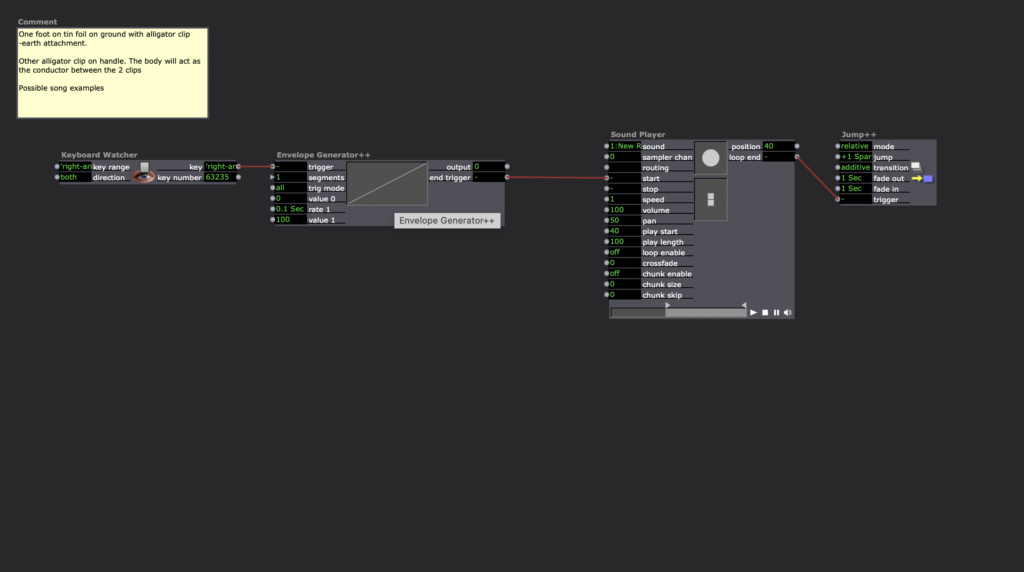Pressure Project 2: Mystery Door
Posted: October 15, 2024 Filed under: Uncategorized Leave a comment »For pressure project #2, Alisha and I decided to work together in order to create our mysterious door experience. We decided to use the resources of a webcam rather than a depth sensor through Isadora, as well as a projector and a MakeyMakey. It was really helpful working with another person for this project, as tech frustration is easier to manage with another person there to work through troubleshooting.
Our initial steps towards designing an interactive experience were MakeyMakey explorations. We were interested in using pencils to draw conductive “buttons” and practiced drawing on top of images to see if that could lead us somewhere. Those first tests were interesting, and might come into my work in the future, but we ultimately decided to use those concepts to make touching the door be a trigger for our Isadora patch.
With the goal to entice a participant into touching the doorknob, we decided we needed to design an Isadora patch (to eventually be projected onto the door) that would pull someone in. We decided to use the webcam as a sensor that would trigger a change in the projection, thinking that it would provide a sort of visual reward for coming closer to the door. So for instance, if the initial projection was a red, hypnotic swirl that then flickers into a red swirl when the webcam senses someone approaching, the hope is that a participant would feel a dopamine rush in realizing they are “supposed” to approach. This brought up some evaluations after our performance about color psychology, as sometimes the color changes felt more alarming than alluring.
Here is a video of the looping projection:
Here is a screenshot of the patch:

The next step towards activating the MakeyMakey was compelling the participant to stand on the “ground” element before touching the door. We made a floor pad out of aluminum foil that was labeled “foot” as well as some cute cut out stars to make the aluminum foil look a little more fancy.
The MakeyMakey alligator clips were clipped to the ground, and then also to the door. When the participant stands on the foil and then touches the door, which completes the circuit, and triggers a sound clip that plays through Isadora. Here is the patch for the MakeyMakey sound trigger:

Touching the door triggers a sound command that says “Open,” and we used some basic human psychology to time a second sound to play on a delay. We calculated that there would be about a second of time in between someone touching the handle, hearing the command “open,” and then opening the door, so after a second, Isadora played a twinkling sound that goes along with the door opening.
Here is a recording of a participant (Chad) interacting with this door.
After we presented, I noticed some things about our design. First of all, I think it would have made sense for us to find a narrower place to set-up our experience, because the projection and sensor relied pretty heavily on a certain way of entering the scene. There were also a few signs around the space that I wish we had removed, as they were confusing and gave commands that were not a part of our set-up. I also have future considerations about ambient light, because during set-up we realized that elements were cast into darkness in order to have a bright enough projector. In the future, I wonder how we might direct interaction on different parts of the install based off of light cues.